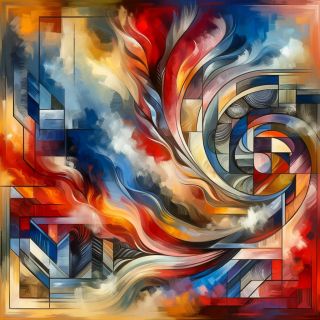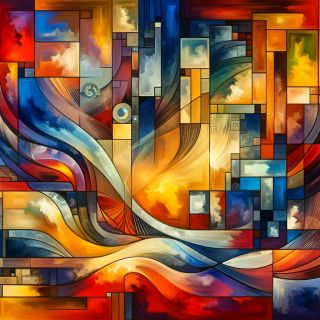Artificial Intelligence
AI and the Aesthetics of Art: A New Era for Collectors
AI-generated art is something new for collectors. Here's what you need to know.
Updated February 4, 2024 Reviewed by Abigail Fagan
Key points
- People currently prefer art displayed in galleries over AI-generated pieces.
- This may be because AI-generated art is perceived as less valuable due to its mass-production capability.
- Perceptions of AI-generated art may change in the future.
“The First AI-Generated Portrait Ever Sold at Auction Shatters Expectations, Fetching $432,500—43 Times Its Estimate,” Eileen Kinsella wrote in Artnet News on October 25, 2018.
What a difference four years makes. I have not found a higher price for AI art since this portrait was sold. Is AI-generated art already in a slump? What are some considerations along these lines? One opinion paper is of help.
Anjay Chatterjee, a well-known researcher in the fields of art and neuroscience, gives us insight in his conceptual analysis (Chatterjee, 2022). In it, he addresses 1) whether AI has agency, 2) what part authenticity plays in its generation, 3) its relationship to art appreciation, and 4) whether AI can become creative on its own.
Does AI Art Have Agency?
By this, Chatterjee means “the choices a person makes, their intentionality, motivations, and the quality of their work.” He illustrates this concept by making the point that a painting a child makes could look like an abstract painting, though that was likely not the intention of the child. On the other hand, it certainly could have been made intentionally by an adult, for example, Picasso. Along these same lines, would a painting made by AI that was instructed to make an abstract painting be intentional like that made by an artist? This is a question, I believe, to which the answer could be debated.
Looking at this another way, forgeries do have a negative connotation in our society. If AI-generated art is considered counterfeit, then it will not be accepted. If, on the other hand, it is considered authentic, it is more likely to be recognized. Certainly, the label, tombstone, or citation would have to include the AI attribution, or all would be lost in terms of transparency.
Is AI Art Authentic?
Here, Dr. Chatterjee gives us some important food for thought: “In one study, people responded more favorably to identical abstract images if they thought the images were hanging in a gallery than if they were generated by a computer (Kirk et al., 2009).”
In addition, the research subjects showed more activity in their pleasure centers when they believed the photo they looked at came from a gallery rather than being generated by an AI machine. Similar findings have been noted in regard to appreciation of wine.
Chatterjee does not leave it here. He continues, “We do not know if such responses that were reported in 2009 will be true in 2029 or 2059.” Thus, he is leaving the door open for future interpretations.
My own bias is that anything produced in masse or potentially in that way can easily be thought of as being of less value. The economic principle behind this is the scarcity assumption. When there is less, an object in demand is worth more, i.e., the work of a single artist. Of course, one could argue that each generated AI is different. Though true, they rarely look remarkably different, one from the other, representing more feast than famine. This is illustrated by the two similar abstract art pieces below generated by Dalle-3 in response to the query to generate an abstract art piece.
AI and Art Appreciation

What kind of art do people like, or do certain groups of people favor? Answering this question is an important way for AI to be a real partner to scientists researching this area. This is because AI machines can be instructed to detect underlying patterns in artwork, which, once trained, can be done efficiently and accurately. Compared to image preference testing using only stated preferences of the subject in earlier years (Ishizu et al., 2011), this represents an enormous advance.

Can AI Become Creative?
A burning question for most people today is whether AI can take off on its own. Can it become creative? Right now, we tell it what to do, and if properly programmed, it will do it. This means it can replace occupations that engage in routine jobs.
Ultimately, trying to answer this question today may be fruitless. At the present, too little is known. However, the Godfather of AI, Geoffrey Hinton, said in an interview on 60 Minutes that there was approximately a 10 percent chance that this would happen. For the present, his prediction is probably the most accurate that we have.
Summary
The intersection of AI and art collecting is multifaceted, encompassing agency, authenticity, perception, and creativity issues. The initial high auction price of an AI-generated portrait opened a Pandora’s box of questions regarding the value and future of AI art. While some aspects, like AI's role in understanding art preferences, show clear progress, the debate on AI's creative autonomy and the long-term perception of AI art continues to evolve. As Chatterjee suggests, our understanding and acceptance of AI in art may transform dramatically in the coming decades, reshaping the art world in unforeseen ways.
References
Chatterjee, A. (2022). Art in an age of artificial intelligence. Frontiers in Psychology, 13. https://doi.org/10.3389/fpsyg.2022.1024449
Ishizu T, Zeki S (2011) Toward A Brain-Based Theory of Beauty. PLoS ONE 6(7): e21852. https://doi.org/10.1371/journal.pone.0021852


